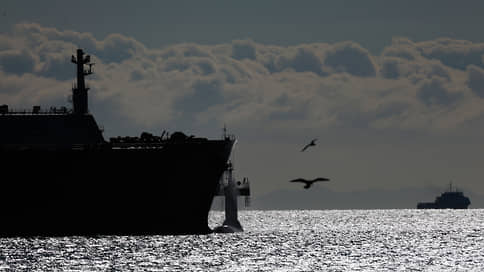A rare tanker will sail to Gydan – Kommersant
[ad_1]

NOVATEK may not receive six LNG tankers this year from the Korean shipyard Hanwha Ocean, which were intended to export gas from the Arctic LNG-2 project. Three gas carriers are now unavailable because their customers, Sovcomflot structures, fell under direct US sanctions on February 23. Three more tankers are being built by order of MOL and are not subject to sanctions, but their delivery is delayed. As a result, NOVATEK does not yet have a fleet for commercial shipments from Arctic LNG-2, despite the launch of the first train of the project.
The delivery of three LNG tankers for the Arctic LNG-2 project, built by order of the Japanese Mitsui OSK Lines (MOL) in South Korea, has been delayed indefinitely. TradeWinds reports this with reference to a MOL representative. The delay there was explained by a shortage of labor at the Hanwha Ocean shipyard. We are talking about the Arc7 ice-class tankers Ilya Mechnikov, Nikolay Semenov and Nikolay Basov, which MOL was going to provide for Arctic LNG-2 in 2024. According to Kommersant’s sources among shipbuilders, the construction of the Ilya Mechnikov is almost completed, it should be ready in March.
The three vessels were not included in the latest US sanctions package, MOL said: “We do not see an immediate impact from the recently announced sanctions on the three vessels.”
Hanwha Ocean is due to deliver three more Arc7 LNG tankers for Arctic LNG 2 this year – Pyotr Kapitsa, Lev Landau and Zhores Alferov, but this is now unlikely, although these vessels have already been built. Initially, they were built by order of Sovcomflot, but Hanwha Ocean terminated the contract in 2022 due to difficulties with payments. The head of NOVATEK, Leonid Mikhelson, told reporters that the contract was being transferred to another shipowner, and the tankers themselves continued to be built. As follows from the package of US sanctions published on February 23, the tankers were built by order of the Cypriot shipping companies Elixon Shipping, Azoria Shipping and Glorina Shipping, which, according to OFAC, are subsidiaries of Sovcomflot. All three Cypriot companies were added to the SDN-list on February 23, and now Hanwha will most likely not interact with them. At the same time, on February 12, Dubai-based New Transshipment FZE became the owner of the tanker Pyotr Kapitsa.
Since Arctic LNG 2 itself is also under US sanctions, MOL will not be able to charter gas carriers for the project. The company plans to sell them to the project operator, but is not sure that it will be able to do this, MOL head Takeshi Hashimoto said in an interview with Bloomberg on February 6. “If we cannot provide the services of Arctic LNG-2, we must sell our Arctic LNG-2 vessel. However, there are restrictions according to which we should not enter into such a transaction. So it’s a little complicated,” he explained.
Thus, it is currently unclear when NOVATEK will be able to start shipping LNG from the first train of Arctic LNG-2 and whether this will happen this year. The plant began producing LNG in December, but due to a lack of tanker fleet it has been unable to begin commercial deliveries. At the same time, on February 27, two cargo ships Audax and Pugnax, according to Kommersant, brought technological modules to Murmansk for the second line of Arctic LNG-2.
The Zvezda shipyard, which is building another 15 tankers for Arctic LNG-2, was also included in the latest SDN list. The first five tankers should have already been transferred to NOVATEK, but, as Kommersant wrote on February 8, their delivery is not expected until the end of the year. Tankers with increased ice class Arc4 and Arc7 are built only by order of NOVATEK; there are no free Arctic gas carriers on the market. NOVATEK, Sovcomflot and MOL did not provide comments.
Perhaps NOVATEK will be able to buy some tankers without ice class for its own needs, believes independent expert Alexander Sobko. “Temporary charter is unlikely, since in the future the owner of the gas carrier risks significantly limiting the use of this vessel on other routes,” he believes.
In the western part of the Kara Sea, tankers without an ice class can sail from July 1 to November 15 on their own in clear water, and under the guidance of an icebreaker – in light ice conditions, notes the head of the Gekon consulting center, Mikhail Grigoriev. “The problem with LNG shipment is that it has to be rhythmic, production is very difficult to interrupt,” he adds.
The largest Russian oil companies are not on the SDN-list, so it is easier for them to bypass restrictions, including those related to the oil price ceiling, by creating their own fleet. In addition, technologically, it is much easier to hide the Russian origin of oil through a series of on-board transshipments, which is difficult with LNG. At the end of 2023, there were only 746 large LNG tankers in the world, while there are at least three times as many oil tankers on the market.
[ad_2]
Source link





